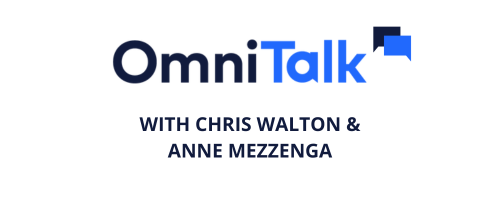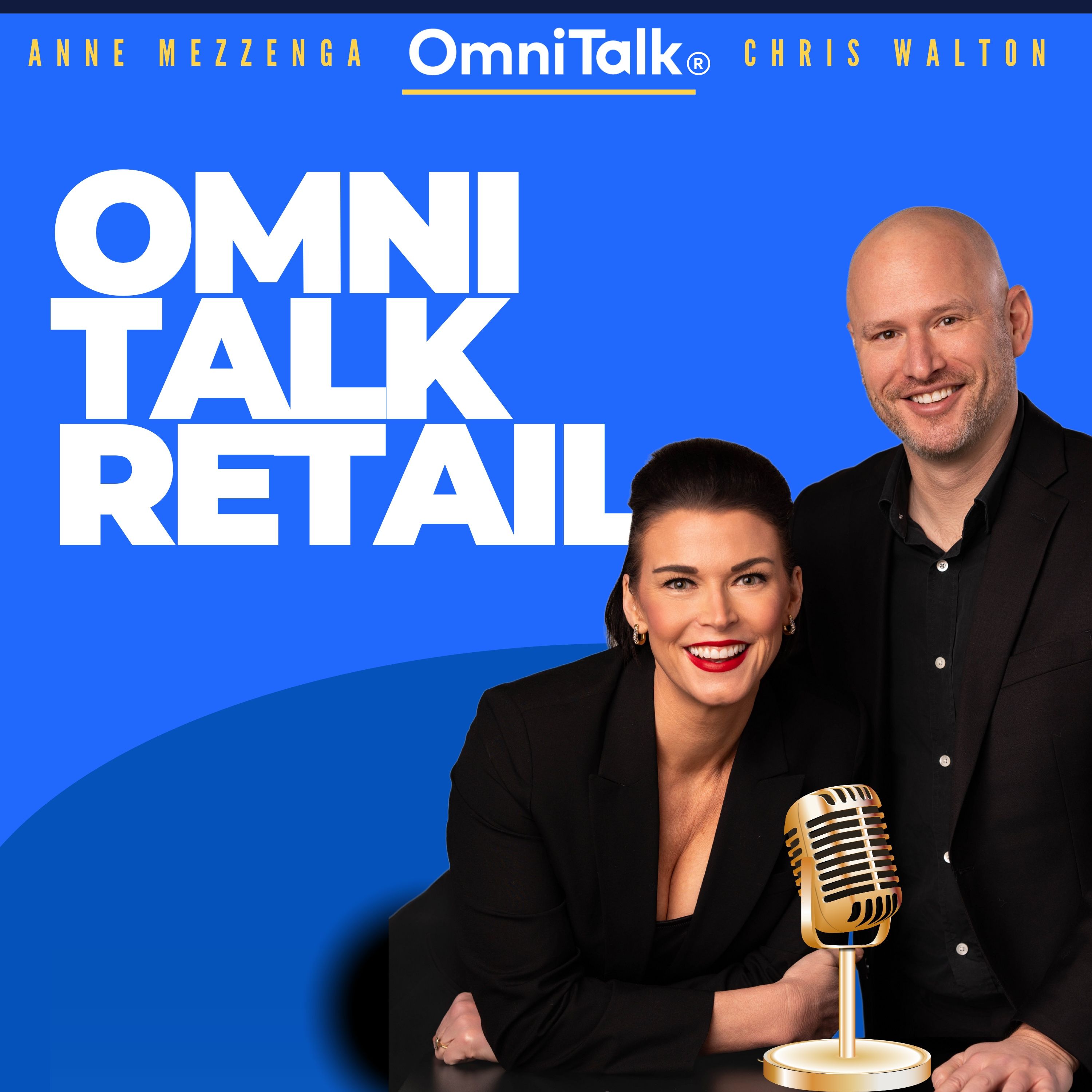PepsiCo Goes Natural: Is This The End of Artificial Colors in Food?
PepsiCo says it plans to replace artificial colors with natural ones across its product lines by 2026, but the move could come with major R&D and consumer acceptance challenges. The Fast Five crew debates whether regulation is the only real way to force change.
0:02 – PepsiCo CEO outlines natural color transition timeline
0:45 – U.S. HHS pushes voluntary color removal by 2026
2:00 – France vs U.S.: stark differences in food color standards
3:40 – Why reformulation is hard: R&D, sourcing, pricing
4:45 – The food-as-medicine opportunity
6:00 – Will Americans accept the change without regulation?
7:00 – Red Vines, Trix, and the real struggle of visual food culture
For the full episode, head here: https://youtu.be/LpW3lI-L7TI
This week's episode is brought to you by the A&M Consumer and Retail Group, Simbe, Mirakl, Ocampo Capital, Infios, and ClearDemand.
#pepsico #naturalingredients #CPGInnovation #FoodReformulation #HealthierSnacks #cleanlabel #doritos #RedVines #foodregulations #RetailPodcast
This podcast uses the following third-party services for analysis:
Podcorn - https://podcorn.com/privacy
Transcript
PepsiCo CEO says that it is, quote, accelerating its transition to natural ingredients, according to Food Dive.
Speaker A:PepsiCo CEO said during PepsiCo's first quarter earnings call with analysts on Thursday that the Cheetos and Doritos maker My Favorite and Doritos plans to have transitioned, quote, all the portfolio into natural colors or at least provide the consumer with natural color options end quote in the next, quote, cold couple years, end quote.
Speaker A:The comments came two days after Health and Human Services Secretary Robert F.
Speaker A:Kennedy Jr.
Speaker A: etic colors before the end of: Speaker A:However, replacing synthetic colors with natural ones and and friends is not easy.
Speaker A:It can be hard to find a suitable replacement and consumers sometimes don't like the new color.
Speaker A:Don't take my Doritos.
Speaker A:PepsiCo case in point in 20 in General Mills changed several cereals, including Trix, as part of its pledge to remove artificial colors and flavors.
Speaker A:I just started thinking about the Liam Neeson when he wants to buy tricks in one of the tech movies.
Speaker A:Fine consumer complaints and a decline in sales.
Speaker A:General Mills brought back tricks with artificial colors a year later.
Speaker A:I guess tricks just aren't for kids.
Speaker A: lace artificial colors before: Speaker A:Is this timeline also even realistic?
Speaker A:This feels like it' your wheelhouse.
Speaker B:I love the the voluntarily.
Speaker B:I mean maybe it's an American thing and companies love to voluntarily comply with with new regulation.
Speaker B:But, but that's, that's going to be a big question because as you said, it's, it's not easy to do.
Speaker B:So as long as it's voluntary, I'm not sure you'll see a lot of people raise their hands and do it first.
Speaker B:But you mentioned, and rightfully so, that you know, the colors aren't going to be the same, the brightness isn't going to be the same and you need to educate the consumer.
Speaker B:That's going to be a big change.
Speaker B:And if you look at shelves in France where I'm from versus shelves in the US it's actually pretty different.
Speaker B:The colors are just less vibrant in France because all of those artificial colorings are most of them are banned already.
Speaker B:So how quickly will the US Consumer adapt to to the new offering?
Speaker B:That's a question mark from the R D perspective.
Speaker B:You know, how do you actually replace, reformulate, validate your your new formulas with with natural colorings?
Speaker B:That's going to be quite tricky.
Speaker B: eline doesn't seem, you know,: Speaker B:So that seems extremely short from an R and D standpoint.
Speaker B:And finally, third is how do you get the relevant supply base?
Speaker B:So a lot of, a lot of your suppliers who work in Europe, they already have a supply chain that can have your natural coloring, but you need to bring it to the US the volumes are going to change, so it puts pressure.
Speaker B:The prices are going to change.
Speaker B:So are the consumers going to want to buy for more expensive, something that looks less good from the American standards?
Speaker B:Going to be a big question mark as well.
Speaker B:So we'll see how it plays out.
Speaker B:If it's voluntary, not sure that will work.
Speaker B:If it's forced by, by the regulator, you don't really have a choice.
Speaker B:So that might make things work faster.
Speaker A:Yeah, it's a question of how long you can breathe for, you know, how much time they give you to breathe.
Speaker A:But eventually, eventually you have to think that some type of regulation is coming in this vein, which is, you know, for me, I think about it, I step back and I say, okay, there's a problem side and then with every problem, there's an opportunity on the problem side is you got to get ready for the regulation.
Speaker A:So you have to start trying to do this.
Speaker A:Like the point I made in the last headline too.
Speaker A:You got to put your product roadmap out.
Speaker A:You got to lay it out in front of you and you got to put a plan in place product by product and see what you can do on the timeline.
Speaker A:Right.
Speaker A:But it's not the time to breathe easy.
Speaker A:We heard the same thing with regards to Fisma from Angela Fernandez of GS1US earlier this weekend.
Speaker A:Remember that where she said in relation to that timeline, moving out, that regulation, moving out, you still have to do the work and get it done.
Speaker A:It's not a time to relax.
Speaker A:But the opportunity side to Luis, I'm curious about this is with all.
Speaker A:With this trend happening, I think from a product development side, it tells the CPG companies that they need to lever up on the idea of food is medicine, continue to develop products in that vein, to take advantage of where the trend is going overall.
Speaker A:From a consumer perspective, how do you think about the new product development in relation to this headline?
Speaker B:Yeah, for sure.
Speaker B:Having healthier food and communicating on it and finding new consumer pockets who are inclined to pay more for healthier and better products.
Speaker B:Yes, but in the current environment, with high inflationary, inflationary pressures, you're actually going the Opposite direction, where a lot of consumers are foregoing more sustainable and healthier products for cheaper products, which often focus less on health or sustainable aspects.
Speaker B:So it's a little bit of a tricky place for smaller CPGs that are already focused on the premium market.
Speaker B:Yeah, they're there.
Speaker B:They can have natural coloring, more sustainable products for the more mass market.
Speaker B:The winners are going to be the ones that are able to comply with regulation with the best price, which means they'll have done a lot of work on their supply chain and negotiated the best deals and found the best suppliers.
Speaker A:So, yeah, you're right.
Speaker A:There's a lot of conflicting forces at play here.
Speaker A:And what's your take here?
Speaker A:What's coming to mind for you?
Speaker C:I am just.
Speaker C:This is one of those times where you're like, oh my God, Americans were so embarrassing that we have to.
Speaker C:We, the General Mills went back to artificially flavored tricks like we.
Speaker C:So to, in my mind, it's like, unless there is a regulation, nothing's going to change.
Speaker C:Like, we need the regulation, I think, to shift American consumer understanding of like getting those good quality ingredients versus artificial ingredients in our food.
Speaker C:Otherwise this is never going to happen.
Speaker C:Like, I had a friend who used to work for Kraft.
Speaker C:She was a food scientist for Kraft and her job for three years was just trying to figure out how to make Kraft macaroni and cheese that wasn't bright orange and still tasted the same.
Speaker C:And it was like the holy grail for.
Speaker C:I mean, she, she probably is still working on it to this day.
Speaker C:And I think, again, like, until this becomes something that we have to do and American consumers understand is like, this is where products are going.
Speaker C:We're going the way of Europe where we just don't have artificial flavorings and colors in our food anymore.
Speaker C:Like, it's never going to work because we're just so accustomed.
Speaker B:Europe and Canada and yeah, by the.
Speaker C:Way, almost every other nation except for the U.S.
Speaker C:right.
Speaker C:Like, yeah, lots of people are seeing the light here.
Speaker C:And I think it's going to take that regulation before the American consumer gets on board.
Speaker A:Shout out to all our Canadian listeners up north.
Speaker A:Yeah.
Speaker A:And to Lisa's point and too, you got to get.
Speaker A:And what can Americans afford to that 99 cent box of Kraft Mac macaroni and cheese is pretty attractive to a lot of consumers.
Speaker A:Jeff, what's the last word here?
Speaker A:Last word.
Speaker A:I agree that it's coming and it will happen, but I hope they can make my Red Vines as red as they.
Speaker B:As red as I like them.
Speaker C:Oh, your red Vines are in big trouble.
Speaker C:Jeff, you and Chris, both.
Speaker C:You guys better stock up.
Speaker A:I had eight of them yesterday, believe it or not, Jeff.
Speaker A:Literally, I had eight.
Speaker A:Eight of them yesterday.
Speaker A:I'm, like, on an eight a day binge right now.
Speaker A:I'm so into Red Vines right now, it's crazy.
Speaker A:Diabetes, here we come.



